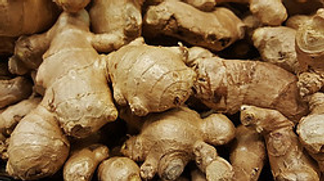
You have this lovely area in your backyard and you want to plant a garden. You’ve been exploring various flowers and shrubs that pique your interest. Then you come across some technical terms like “rhizomes”. What is a rhizome, you wonder? Here is a full explanation of what a rhizome is, including how to identify a rhizome, which flowers have rhizomes, and much more.
(Some of the links within this post are affiliate links on which I receive a small compensation from the sale of certain items.)
(As an Amazon Associate I earn from qualifying purchases with no cost to you.)
What is a Rhizome?
According to Britannica, a rhizome is a creeping rootstalk that grows horizontally either under the ground or slightly above the ground. Rhizomes are also referred to as stems which reproduce and store food.
The function of the stem of an upright plant is to transfer energy produced by nutrients and water from the roots to the flowers and leaves. Rhizomes perform the same function but spread horizontally.
A rhizome is capable of forming new plant shoots and roots for a new plant. It sends out stems that produce nodes (an offshoot rhizome) that will produce another plant.
Not Seed Producers
Rhizomes do not rely on seeds to reproduce another flower. Instead, they produce nodes from stems.
The rhizome is similar to a bulb in that it stores energy and nutrients to enable the plant to survive harsh winters. Unlike a bulb that grows vertically with the plant’s roots, a rhizome grows horizontally.
Plants with rhizomes have adapted through the years from upright stems to horizontal stems. The main reason for the adaptation was for protection from harsh winters and animals that forage for food. The rhizomes gradually became larger so they could contain or store a larger volume when food and water were in short supply.
Some rhizomes are used for food, such as turmeric, ginger, and lotus.
Click to Purchase Rhizomes from Etsy.
How to Identify a Rhizome
Rhizomes are thick nodes that form parallel to the ground. Several rhizomes of the same plant usually grow side by side along the ground.
In contrast, roots have long straggly worm-like structures below the ground underneath the flowering plant.
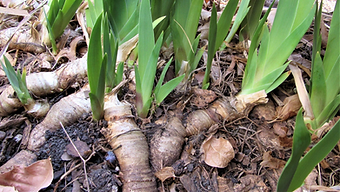
How is a Rhizome Different From a Root?
Roots come in two varieties, a taproot or fibrous root.
Taproots are very long, thick roots that grow deep into the ground and anchor plant to the ground.
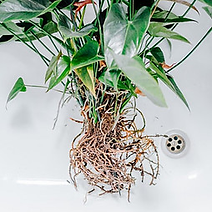
Fibrous roots are highways of long tangled thin to thick roots which also anchor the plant to the ground.
Unlike rhizomes that store their nutrients in the nodes, roots gather nutrients and water from the ground using their hair like roots. These soft roots are protected by a root cap at the tip of each root from which new roots grow. The roots help the plant dig deeper into the ground to not only stabilize the plant, but find nutrients and water to be sent to the various parts of the plant. This aids in photosynthesis.
Roots also have the ability to hold nutrients and water in reserve in times of stress like drought or extreme cold.
How to Plant Rhizomes
If you purchase a bare-rooted rhizome plant through the mail, follow these directions.
- Soak the rhizome for a few hours in water or compost tea.
- Dig a shallow trench 1 to 2 inches deep in good, fertile, well-drained soil.
- Plant the rhizome with the buds facing up 1 to 2 inches in the ground.
- Water every 2 to 3 days until it begins to grow taller shoots; do not over water.
Planting plants from dividing the rhizome:
- Divide your rhizome plants either in late spring or early fall.
- Dig directly down through the clump of rhizomes with a spade shovel or garden pitch fork.
- Press the shovel back toward you to lift the plant out of the ground.
- Once it has been retrieved, cut the rhizomes into 2 to 4 inch pieces taking care to have buds and roots in each piece.
- Replant only the healthy looking parts. Discard any spent or diseased-looking sections.
- Dig a shallow hole and place the rhizome into the soil.
- The bottom of the leaf where it meets the rhizome should be just peeking out of the ground.
- Cut the leaves to 3 to 4 inches. Water well.
Plant the rhizomes 10 to 12 inches apart to make room for expansion.
Light Requirements:
Most flowers that have rhizomes prefer full sunlight.
Soil Requirements:
Flowers with rhizomes thrive in rich, moist, well drained soil.
Water Requirements:
Water every 2 to 3 days until established. Do not over water or the rhizomes will rot.
Caution!
Most plants with rhizomes are spreaders. Be sure to plant them where you will not mind if they spread throughout your garden.
If you wish to prevent them from spreading, plant them in a plastic container and cut out the bottom of the pot so the water will drain through the soil.
Some Flowering Plants that Contain Rhizomes
Bearded Iris
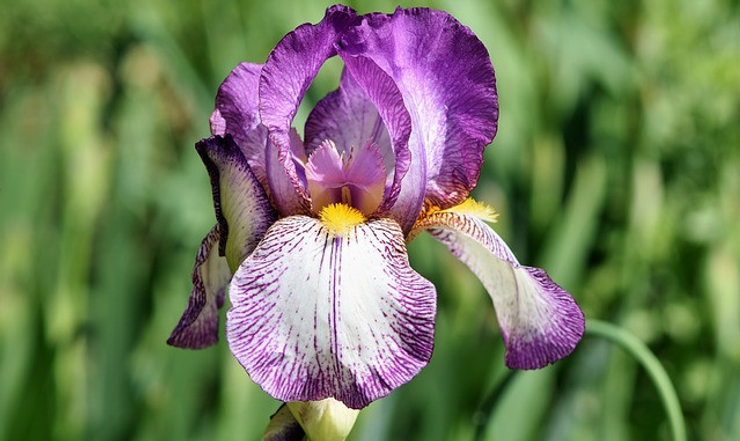
Bearded iris will bloom in full sun in well drained soil. They will spread, so make sure you choose a location where it can spread its stems.
Calla Lily
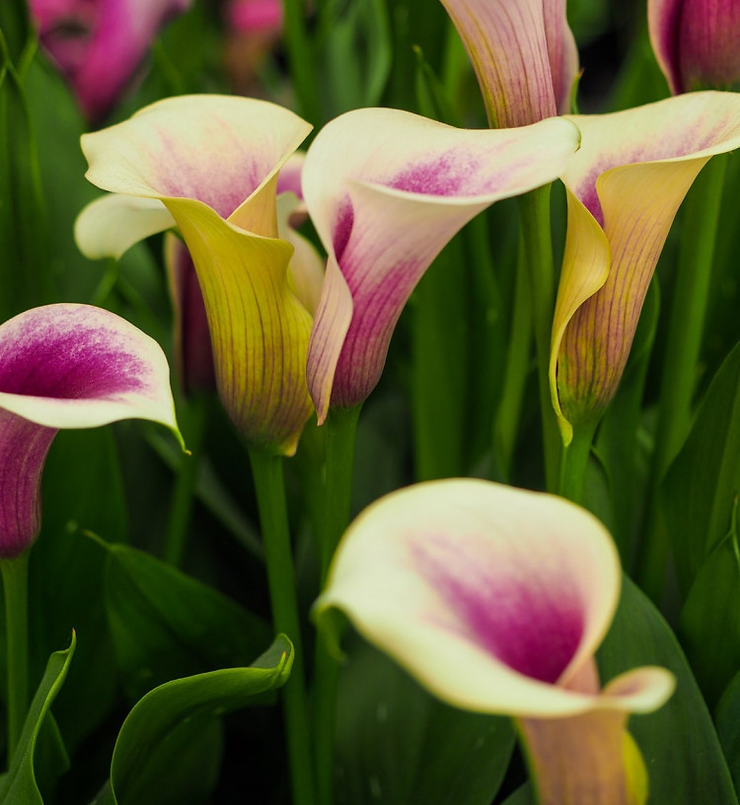
Calla lilies are beautiful delicate flowers that look great in pots or in a garden.
Lily of the Valley
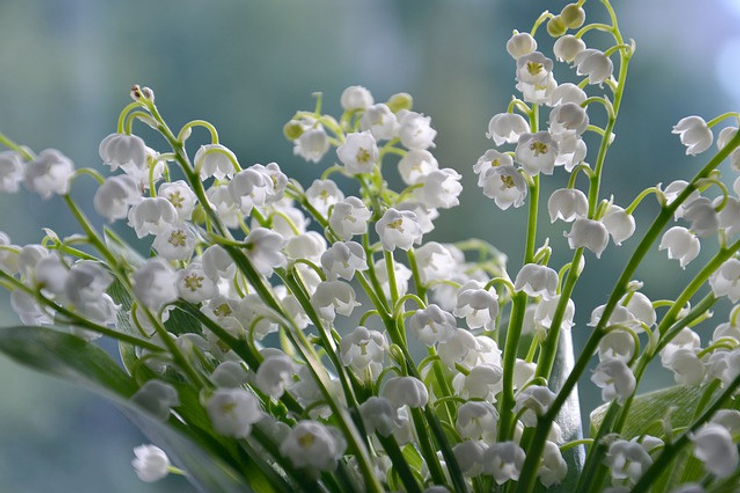
This fragrant, tiny, bell-shaped flower grows profusely on thin stems. It is carefree and thrives in partial shade.
Canna Lily Plant
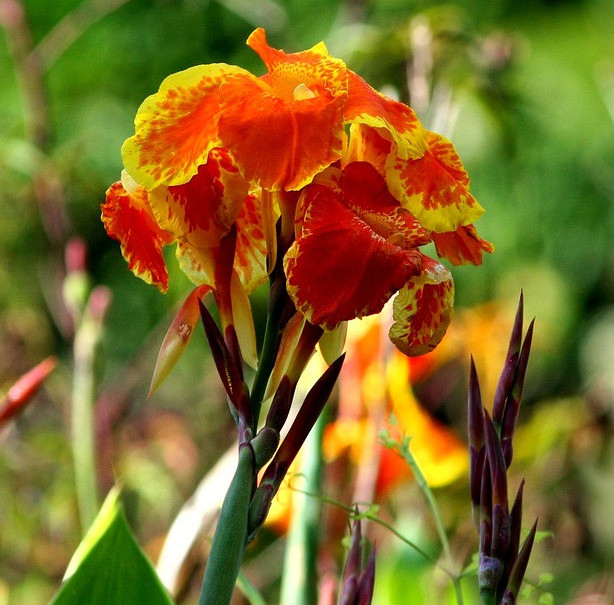
A Canna Lily has a tropical appearing flower with a rhizome system but is best planted 3 to 6 inches deep in the ground in a high sun area. It is considered an annual in colder climates.
Ferns

Most ferns have rhizomes, however they are shorter and produce more fronds than typical rhizomes. They are a wonderful addition to a shaded garden. Ferns add a tropical rainforest feel.
Some mint plants also have a rhizomatous stem system. Read here for more information on mint plants.
Final Thoughts – What is a Rhizome?
After reading this post and viewing the pictures, you should now be an expert on rhizomes! Plants with a rhizomatous stem system add lovely variety to any sun-filled garden. Remember though, that they do spread and can overwhelm an area.
I hope you learned a thing or two today and will add a comment below. If you liked this article, please share it.
Happy Gardening!
Nina

